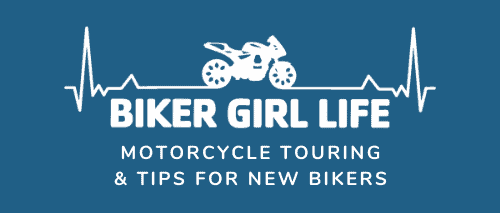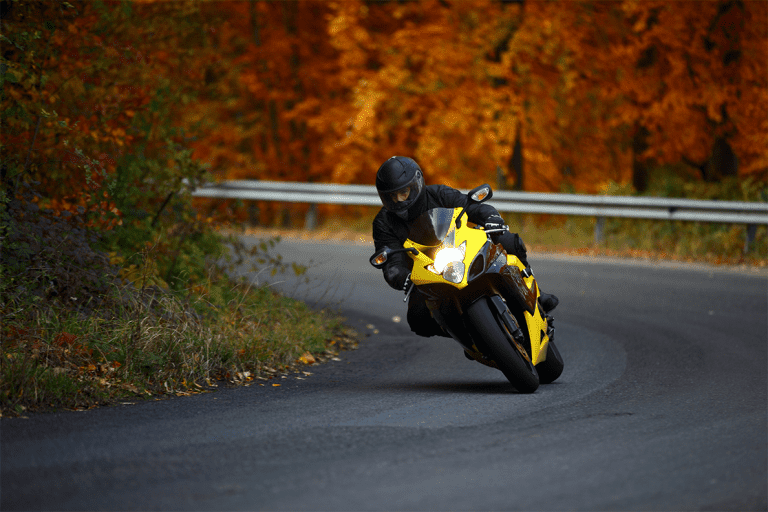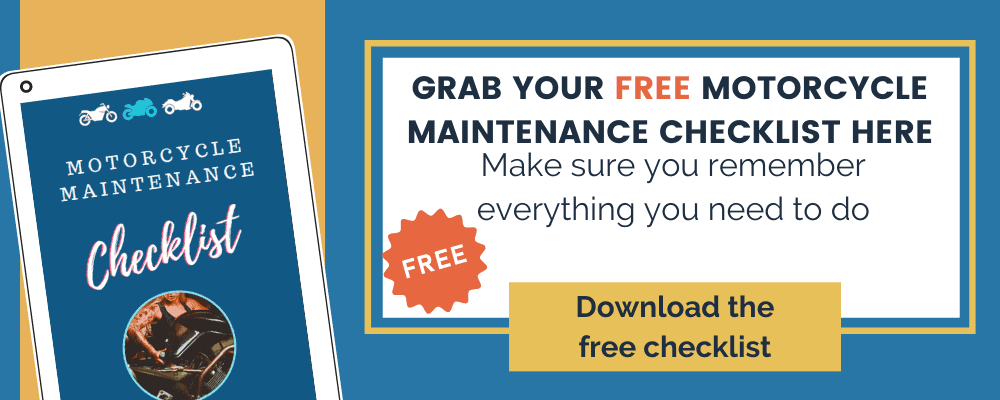Planning a motorbike trip to Germany? Want to see some of the most incredible places in Europe? Here’s everything you need to know to go motorcycling in Germany, including routes and places to visit.
Don’t forget to grab your FREE motorcycle maintenance checklist below to help you get ready for your trip.
*We work hard to make this the best motorcycle touring & tips website possible. The website is supported by our readers, so if you buy through links on this site we may earn a commission- at no extra cost to you. All opinions remain our own. Ride safe!
Motorcycling in Germany – why you should go!
Germany one of my all-time favourite countries in Europe. The history is mind-boggling, the people are friendly and the castles. Oh my goodness, the castles are out of this world.
Plus there’s yummy food, roads without speed limits (yes baby!), beer halls (which are terrific fun) AND there are toboggan runs- I’m officially addicted. Suffice it to say, we’ve been back to Germany several times and there’s not been anywhere in the country I’ve not enjoyed.
In this post, we’re going to share with you everything you need to know to go motorcycling in Germany, including getting to Germany and planning your route, where to stay, some road trip itineraries and places to visit, driving tips and other practical advice to help you have an amazing German road trip.
Motorcycle Touring in Germany- where to go
When planning a motorcycle trip to Germany, the first thing you need to do is decide where you’re going (and how long you have for your adventure!)
If you’re driving from the UK to Germany (we’ll cover that shortly), you need to allow at least a day to get from arriving in France (by either ferry or Eurotunnel) to the west German border. Of course, if you only have a week for motorcycle touring, that only allows a few days to explore the country, so we’d suggest staying to the west of the country.
If you have 10-14 days or longer to tour Germany, you can get a lot further east, certainly as far as Füssen and Neuschwanstein Castle on the Romantic Road and possibly even further if you’re happy to drive every day. We have made it all the way to the Eagle’s Nest on the SE corner and back in 2 weeks, but it’s a lot of driving!
Highlights of a motorbike tour of Germany
There’s a 10-day itinerary for southern Germany later in this guide, but some of our favourite places that we’ve visited in Germany (so far!) include:
- The Black Forest. The entire area is incredible and the B500 is one of the BEST roads we’ve ever been on!
- Camping next to the Kiel Canal (with our motorcycle campervan). The size of those ships…!
- Munich. There’s something about this city that keeps us coming back. I think it’s the beer halls…
- Hohenzollern Castle. Possibly my favourite castle in Germany
- Any of the rodelbahns (the toboggan runs). They’re so much fun
- Cologne. The cathedral is incredible.
- Basically anywhere which sells bratwurst…
Make sure you bring a motorcycle camera or helmet cam– the scenery is incredible, especially in the Black Forest!
When to go motorbike touring in Germany
As with all European road trips, WHEN is almost as important as WHERE.
The weather and seasons in Germany are very similar to the UK, although with generally warmer summers.
Summer is wonderful and if you don’t want to visit any cities, is a great time to explore (the cities get CRAZY crowded). Having said that, we visited Miniature Wonderland in Hamburg and toured along the Kiel Canal in July (on the way up to motorcycling in Norway) and it was perfect weather and not too busy.
As always, we prefer to tour outside of peak season, so we love touring Germany in Spring or Autumn. The weather is generally sunny and warm and the days are still long enough to make the most of them. The mountains may still have snow- we went up Zugspitze (the highest mountain in Germany) in April and it was still covered in snow.
In winter, expect snow, rain and cold, so make sure you pack appropriately if you’re visiting then, including fitting winter or all-season tyres. Despite the dreariness, we also love touring in Germany in December, so we can visit the incredible Christmas markets (Germany has some of the best and biggest Christmas markets in Europe!)
Planning a driving route from UK to Germany
There are several ways to get from the UK to Germany. The first question to ask yourself when you’re planning a motorcycle trip in Europe is are you happy to pay tolls, or do you want to take the slower but cheaper back roads?
Also, if you’re driving your own vehicle from the UK, you need to decide how to get there. This is one of the few times I believe the Eurotunnel is consistently best- because no matter where you’re coming from in the UK, Calais is pretty much on the way to Germany.
Having said that, if you prefer not to use the Eurotunnel (or can’t, if you have LPG propulsion), there are plenty of ferry options, including along the coast of France and also Harwich to the Netherlands.
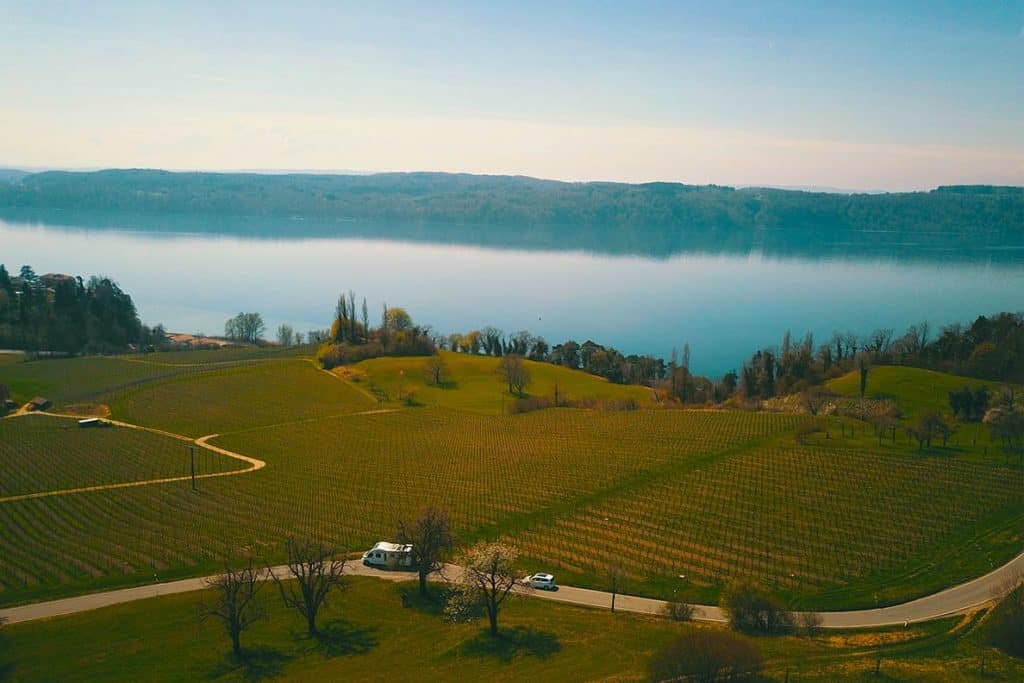
Motorcycle Hire in Germany
If you don’t have your own bike, or don’t want to take it, you can easily fly into Germany and hire one. Just make sure to ask how to get from the airport to the rental agency- not all of them are at the airport itself and you might need to book a taxi.
To rent a motorcycle in Germany most places will expect you to be:
- Minimum age of 25 years, depending on the company’s rental policy.
- Riders of mopeds or motorcycles up to 125cc must be aged 16 or over.
- Have a valid driving licence with at least 2 years experience
- Show identification (identity card for EU citizens or a valid passport for other nationalities)
Make sure you have proof that you can take the vehicle across a border if that’s what you’re planning to do.
Don’t forget, it is YOUR responsibility to make sure the vehicle has the required safety equipment. The on-the-spot fines apply to you as the rider, not the company. Check in advance with the company what kit they will provide with the vehicle and what you will need to bring. If you are solo motorcycle touring, remember you’ll need to carry everything yourself, including any motorcycle camping kit.
Take a list of what is legally required with you and check it off one by one as you are given the handover. Do not drive until you are happy you comply with the local laws.
You can expect to pay anywhere from 80€-150€ day- based on model. Make sure you ask the right questions to know what’s included in your rental, such as:
- Mileage limits/ surcharge
- Kit included
- Luggage included
- Helmet rental available
- Pillion allowed
- Breakdown/ insurance cover
- Times & location of pick up/ drop off
- Documents needed
Motorcycling in Germany- what gear do you need to carry?
Just like most of Europe, there are certain things you MUST carry with you whilst motorbike touring in Germany.
Don’t forget, if you are motorcycling through France to get to Germany, you’ll need to carry all the kit required in France as well
Things you need to ride in Germany- safety gear
These are the things you MUST have with you when you’re motorcycle touring in Germany.
- Wearing a helmet is mandatory for riders and pillions.
- CE certified gloves are also mandatory for rider and pillion
- Warning triangle (compulsory in every vehicle with four wheels or more)
- Hi-vis reflective jackets – you must wear them on the side of the road or hard shoulder or risk being fined. You do NOT have to ride with one on if you don’t wish to.
- You do not need headlight beam converters on a motorcycle in Europe unless your headlight points dramatically to the left.
- Country (UK) sticker attached to the back of bike on reg plates. (NOT the EU or GB sticker anymore!)
- Winter or all-season tyres in wintry conditions are compulsory.
- If you wear glasses you should carry a spare pair
NOTE – If buying a helmet, check for an ECE 22 E-Mark label to be road-legal on European roads. Read more.
TOP TIP: Buy these essentials for riding in Germany in advance. If you wait until you’re at the ferry/ tunnel, you could spend THREE times as much!
Recommended bike accessories you MIGHT need when motorcycling in Germany
The following kit are things you might need to carry in your kit.
- First aid kit (only compulsory for four-wheeled vehicles registered in Germany)
- Spare bulbs
- Torch
- Snacks and water- just in case!
Don’t forget to do your motorcycle maintenance checks before you leave- grab your FREE motorcycle maintenance checklist here
What documents do you need to drive in Germany?
If you’re motorcycling in Germany, you need to carry the following documents:
- Passport (or identity card)
- Driving licence (check it is in date!)
- Insurance documents- check you are covered for driving in Europe
- Breakdown cover
- Vehicle V5 logbook (which must show your correct address)
We advise to also have the following documents to hand:
- Vehicle taxed and MOT
- Trailer certification
- International Driving Permit if required
- Personal travel insurance
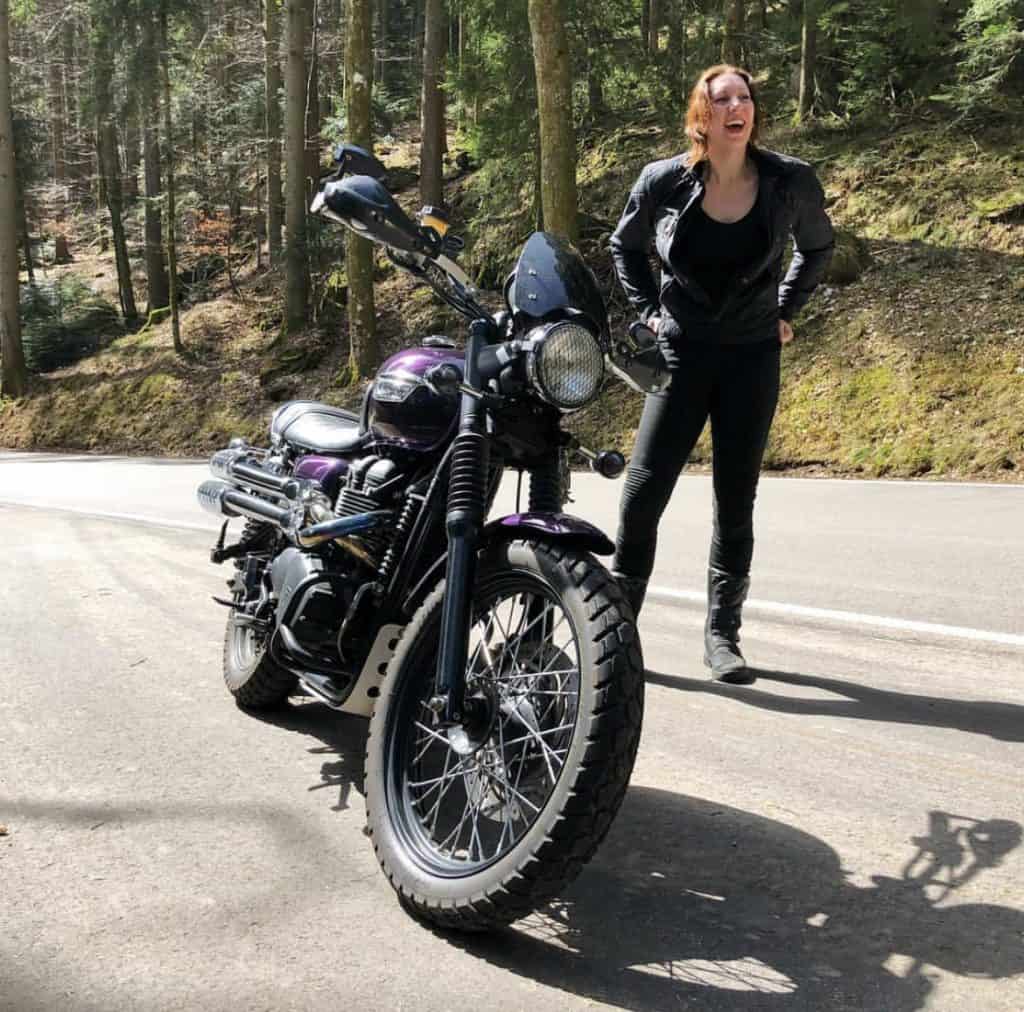
Do I need an international driving permit to drive in Germany?
Most UK citizens do not need an IDP to drive in Germany for periods up to 6 months, as long as you have a card driving licence issued in the UK (in date, of course!)
If you hold a paper driving licence or a driving licence from the Isle of Man, you may need a 1968 IDP. Check with the German Embassy.
Driving & Motorcycling laws for Germany
German drivers are mostly pretty confident and drive accurately and fast. If you’re used to motorcycling in Italy, it may be a welcome change! The roads are well maintained, and roadworks are well-organised and planned.
- Germany drives on the right, so stay right and let them overtake on the left.
- Check your mirrors regularly- other drivers will usually indicate to show they are going to overtake.
- Do not undertake!
- All vehicles turning right must give priority to bicycles (on their inside) going straight on.
- If you see hazard lights ahead, this means an accident or traffic jam. Slow right down and put on your hazard lights too, to alert the person behind you.
- A sign saying ‘Umleitung’ (or just ‘U’) mean diversion. ‘Geschlossen’ means closed
- ‘Ausfahrt’ (yes, I giggle very time) means exit. You’ll see this on every road exit. There will be a different speed limit for the slip road.
- Headlights – Germany has no law about using dipped headlights during daytime.
- In-car speed camera detectors and motorcycle sat-nav systems warning of the presence of radars are illegal (whether they’re in use or not!)
- Dash-cams are allowed but must not obscure the driver’s vision and any footage used in videos must obscure faces and numberplates.
- Using or holding a mobile phone while the engine is on is illegal
- Minor traffic offences can result in on-the-spot fines.
- a ‘no overtaking sign’ means you cannot pass a vehicle with more than two wheels.
- Drivers cannot overtake a school bus – which can usually be identified by red flashing lights – that has stopped outside a built-up area to let passengers on or off.
- Traffic from the right tends to have priority at crossroads and junctions.
- Vehicles turning left at an intersection have to give way to oncoming vehicles
Autobahns
Autobahns are motorways and many don’t have speed limits. At all. You can go as fast as is safe. However, there are areas where speed limits are now enforced- you’ll see the speed signs on the side of the road and these must be obeyed- there will be cameras.
LEGAL SPEED SIGNS: A round white sign with red border and black numbers (such as ‘130′) means that is the legal speed limit and must be adhered to.
SUGGESTED TOP SPEED: square blue sign with white numbers reading ‘130′ means that’s the suggested top speed.
Also, be sure to leave extra braking room- they might not have speed limits, but they take a very stern view on anyone causing an accident.
Speed limits in Germany
Speed Limits are as follows (unless otherwise signed!)
- Motorways/ autobahns- none unless indicated but 130km/h (recommended)
- Major roads- 100 km/h (62 mph)
- Built up areas- 50 km/h (31 mph)
Speed cameras in Germany
Despite the lack of restriction on the Autobahns, there are PLENTY of speed cameras elsewhere.
Rest Stops
The autobahn has rest stops (Raststätten) with fuel stations, restaurants, shops, picnic tables and toilets (expect to pay an entrance fee!) There are also picnic areas along many roads, but these often have no facilities.
Drink driving laws
Germany has stricter drink driving laws than the UK, only allowing 0.5 milligrams of alcohol per millilitre of blood (the UK is 0.8). As always, don’t drink and drive.
Low Emission Zones
Germany does have Umweltzonen (low emission zones) in some bigger cities. Click here for more detailed information about how to find zones across Europe.
Sometimes, there’s no warning until you’re already in one! Luckily, they’re policed by wardens rather than cameras.
Toll Roads in Germany
You’ll be pleased to know that, for vehicles under 7.5 tonnes, there are no tolls or vignettes to pay in Germany, except for a couple of tunnels. However, they have been talking about adding tolls onto their most popular Autobahns for years, so I expect some to pop up in the future.
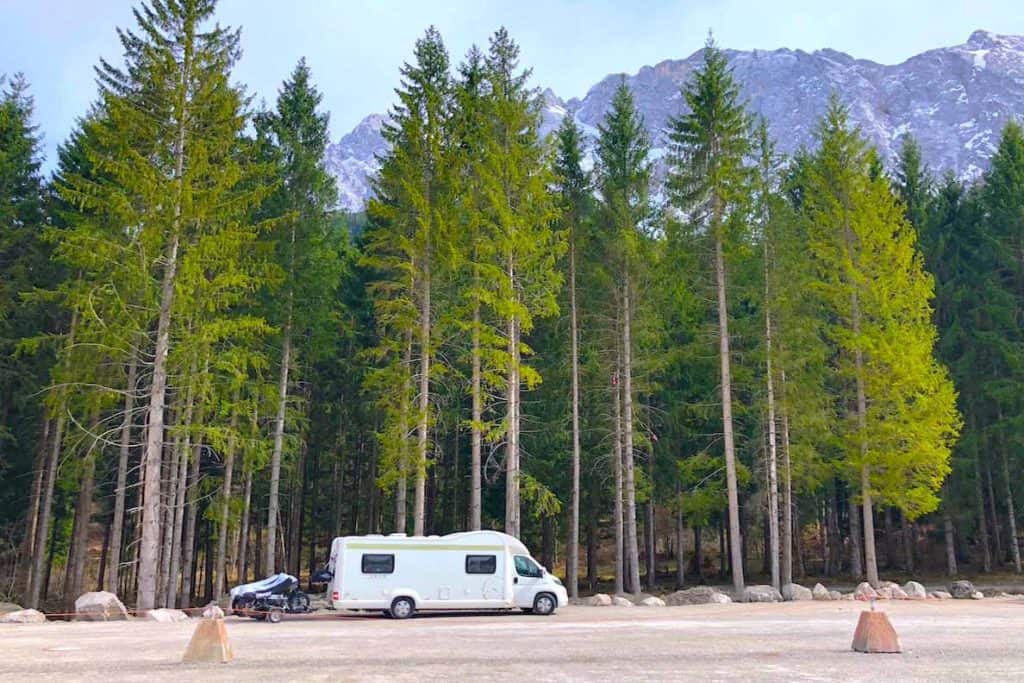
Driving in Germany- what to do in the event of a road traffic accident
You should have a European Claim Form provided by your insurer before you leave. In the event of an accident, all parties complete and sign the form at the scene and then send a copy to your insurer for assessment.
What to do at the scene:
- Stop your vehicle immediately but safely- out of the flow of traffic if possible.
- If a vehicle is blocking the road, use hazard lights and put the red warning triangle 30 metres from the scene to warn approaching traffic
- Exchange your details with the other involved parties. Be sure to get:
- Name and address of all the people involved in the accident
- Vehicle registration numbers of all parties
- Insurance company details of all parties
- Take photos of damage using a camera, GoPro or phone
“Rettungsgasse”
German (and Austrian) law requires drivers to create a Rettungsgasse (emergency vehicle lane) whenever there is an accident or emergency on the Autobahn. This is so ambulances, police or fire can get to the casualties.
NOTE: This is only for when you are pulling to a stop or very very slow moving.
If there are two lanes (going in the same direction), drivers must move their vehicles to the far right or far left (whichever is closest to you), creating a middle open lane for emergency vehicles. If there are more than two lanes then drivers in the right-side lanes stay far right, while drivers in the middle or left lane(s) go on the far left. The emergency parking lane (hard shoulder) should not be blocked unless signage or a police officer indicates otherwise.
You should keep all doors closed and avoid standing outside the vehicle so you don’t get in the way of any emergency service vehicles.
Petrol/ Diesel
There are plenty of fuel stations across Germany. As with everywhere, you’ll find the prices slightly higher on the Autobahns, although we found even those to be cheaper than in France or the UK.
Benzin is Petrol (gasoline). It’s often super (95) or Super plus (98) – Green handles on pump
Diesel is diesel. Black or yellow handles on pump
Some places are 24h pay at the pump, but may require you to go into the shop and pay the cashier either in advance or after you’ve filled up- there will be a sign to tell you what to do. (Leave your car in front of the pump and make a note of the pump number.)
You can pay using cash or a credit card. Many places do NOT take American Express. Non-autobahn stations in Germany may or may not accept card payment. You can usually use your UK cards without a problem.
Motorcycling in Germany – Itinerary ideas and places to visit
If you’ve never been to Germany before, here’s the 10 day itinerary we did in the Black Forest and the Romantic road (south Germany)
- Start off in the Black Forest. Our first stop was Todtnau, where we rode the Hasenhorn Rodelbahn toboggan run (which was awesome!). There’s also a lovely walk at Todtnau waterfall
- Visit Triberg– the home of the world’s largest and smallest cuckoo blocks.
- Visit Hohenzollern Castle– the castle perched on the hill
- Head off down the Romantic road. There are too many highlights to count, including some of the best waterfalls in Europe, but you have to visit Neuschwanstein Castle– the one which inspired Walt Disney (be sure to go inside too- it’s breathtaking.)
We also tied this trip in with a visit to the Rhine Falls in Switzerland, a trip around Lake Constance, wild camping for the night in Austria and we ended with a trip up Zugspitze- the highest mountain in Germany.
More useful things to know when motorcycling in Germany
Emergency Numbers: 112 will get you everything you need.
Language: German. English is widely understood and spoken.
Currency: Euro
Cards: most major credit and debit cards are accepted. American Express is only taken in large stores (not often at fuel stations)
Timezone: GMT+1 (or one hour ahead in BST) Germany is always one hour ahead of the UK, no matter what. Their clocks go forward and back whenever ours does.
Tipping– If you decide to treat yourself to a meal out and the service has been good, tipping 10-15% is standard. Coffee shops and lunchtime eateries often don’t include a tip, so check your bill before paying. Cash is best- the server rarely gets any tips added on by card.
Customs: There is no border between Germany and it’s EU neighbours, so you can carry as much alcohol and tobacco as you wish, as long as it’s for personal use. There are official border points on major roads into Switzerland, although we went the back roads and just drove right in!
Shops– Many shops, bars and restaurants close on Sundays. Bigger supermarkets may be open, but will close at lunchtime. If bakeries open on Sundays, they are often closed on Mondays instead. Many shops and businesses also shut for a long lunch (between 12-2pm) and some will not open on Wednesday afternoons.
Laundry: There are self-service launderettes in all major towns and cities, but many campsites have them as well. SB waschsalon is what you need to seach for in Google.
There are some localised laws in more rural areas- such as no vacuuming or washing on Sunday (day of rest) and no playing loud music during siesta time (12-3pm). Don’t worry, the Germans will tell you if you are breaking any rules.
Germans can sometimes come across as abrupt, but that’s a cultural thing- try not to take it personally. They are also EPIC at queuing and being on time- better than the British. Public transport is almost always to the minute- so don’t be late!
Don’t stand too close in queues or when talking to people- they value personal space.
Using the Nazi salute, saying or shouting “heil Hitler” and wearing or displaying the swastika or other symbols of the Third Reich is a criminal offence, punishable by up to five years in prison. They do not take ‘it was a joke’ as an acceptable reason.
The German’s do not shy away from their history, but they are keen not to make light of it. There are plenty of museums and historical reminders to the Holocaust, concentration camps and the wars, but they insist (rightly so) you treat these places with respect- no vandalism, sitting on them, and sometimes even taking ‘selfies’ is frowned upon.
Jaywalking (crossing the road without a crossing) is illegal in Germany and you may be fined.
Food and Drink in Germany
Bratwurst. That is all you need to know. It’s spicy pork sausage with bread and maybe a sauce (my husband loves the Currywurst). There are apparently over 1500 different varieties! Bratwurst mit pommes (sausage and chips) is served EVERYWHERE- even many service station restaurants.
They also love kebabs. There are over 16,000 kebab restaurants in Germany, and apparently they sell 30 döner kebabs a second!!!
For unique foods, you have to try Black Forest Gateau in the Black Forest (Triberg is famous for it). Also, try sauerkraut (pickled cabbage). It’s an… acquired taste but not as bad as it sounds!
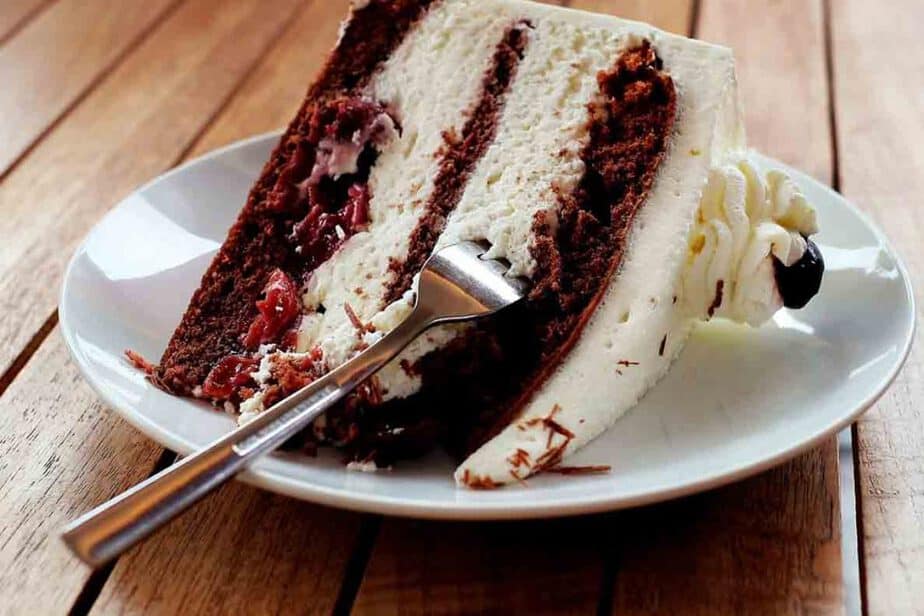
Germany is famous for its local beer and they take it very seriously! There are other options on the menu if you’re a non-beer drinker (like me.) Don’t ask for tap water- they consider that rude. Mineral water (still or sparkling) is always available by the bottle.
If you visit a beer festival and some the bigger beer halls, you will be charged a ‘pfand’ which is a deposit for the glass. Often, you keep one glass and they come around with huge jugs to refill your glass. They also love brandy and schnapps. You might also be charged a pfand at a supermarket if you buy bottles- you can take them back for a refund if you wish.
Germany is great for eating out- and priced very reasonably. We love the informality of the beer halls (mainly found in cities- Munich is our favourite so far), but I think only once have we had a ‘bad’ meal- Germans take their food seriously and bad places don’t last long.
Touring Germany with a dog
Germany is pretty dog-friendly and they are widely accepted on public transport. Take a muzzle and their pet paperwork, such as the AHC- although we’ve never been asked to show this.
To return into the UK you’ll need a vet on the continent to administer a worming treatment and then allow between 24 hours and 5 days before re-entering the UK. We’ve done this in Germany with no issues.
You need to declare your pets when crossing from the UK to Europe (and back) and will pay an additional amount for them to travel.
Using a Drone in Germany
Drones and similar remote-controlled flying devices are allowed in Germany are long as you stay at least a minimum of 100m from people, vehicles and buildings that are not connected with the drone operator. Flying must happen in daylight only and up to a maximum height of 100m. Never fly closer than 1.5km to airports. The drone must always remain within the sight of the operator.
READ MORE: What’s the best travel drone (and how to choose)
If you have a drone above 2kg, you must have a qualification. All drones above 250g must be clearly labelled.
Please check for local regulations and military or other special restricted areas where all the aforementioned activities are forbidden by law. Here are the current rules.
DISCLAIMER: This post was last updated in October 2021. We try to keep it as up to date as possible, but cannot be held responsible for any changes made to the law since the last update. If you do find any discrepancies, please do let us know. Thanks.

Kat has spent years touring the UK and Europe by motorcycle, car and motorhome. It was the idea of motorcycle touring which pushed her to go from nervous new biker to excited explorer and she still can’t believe some of the crazy mountain roads she’s ridden!
She has owned several bikes, with her favourites being a Triumph Scrambler for long rides and her current speed demon- a ZX6R (both purple!) Whilst she loves to travel, her favourite thing is to help other bikers (both male and female) gain the confidence to have their own epic adventures. Ride safe!
